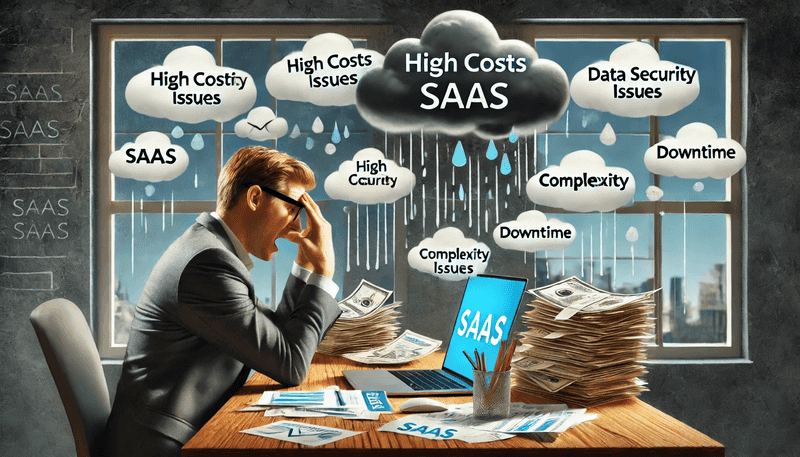
The Downside of Software as a Service (SaaS)
Software as a Service (SaaS) has revolutionized the way businesses operate, offering numerous advantages such as cost savings, scalability, and ease of use. However, like any technology, it also comes with its own set of challenges and drawbacks. In this blog post, we will explore the negative aspects of SaaS to provide a balanced perspective for businesses considering this model.
1. Data Security and Privacy Concerns
One of the most significant concerns with SaaS is data security. When using SaaS applications, sensitive business data is stored on the provider's servers. This raises several issues:
- Data Breaches: SaaS providers are prime targets for cyberattacks. A breach at the provider's end can compromise all their clients' data.
- Compliance Issues: Different industries have varying regulations regarding data privacy. Ensuring that a SaaS provider complies with all relevant regulations can be challenging.
- Data Ownership and Control: There's often ambiguity about who owns the data stored on SaaS platforms and how it can be used or shared.
2. Downtime and Reliability
SaaS applications rely on internet connectivity. If the service provider experiences downtime or if there's an issue with internet connectivity, it can significantly disrupt business operations:
- Service Outages: Even the most reliable SaaS providers can experience downtime, which can halt business activities and lead to financial losses.
- Dependency on Internet Connectivity: For businesses in areas with unreliable internet service, SaaS might not be a viable option.
3. Hidden Costs
While SaaS is often marketed as a cost-effective solution, there are several hidden costs that businesses need to be aware of:
- Subscription Fees: The ongoing subscription fees can add up over time, especially for larger organizations with many users.
- Additional Charges: Providers may charge extra for additional features, data storage, or higher levels of support.
- Migration Costs: Switching to a SaaS model can involve significant migration costs, including data transfer and employee training.
4. Limited Customization
SaaS solutions are generally designed to meet the needs of a broad audience. As a result, they often offer limited customization options:
- Generic Solutions: Businesses may find that SaaS applications do not fully meet their specific needs or require them to change their processes to fit the software.
- Vendor Lock-In: Customizations and integrations with existing systems can make it difficult to switch providers, leading to vendor lock-in.
5. Performance Issues
Performance can be a concern with SaaS applications, particularly for businesses with high performance or low-latency requirements:
- Latency: Depending on the location of the SaaS provider's data centers, users may experience latency issues, which can affect productivity.
- Scalability: While SaaS solutions are marketed as scalable, performance can degrade as user load increases, depending on the provider’s infrastructure.
6. Data Transfer and Integration Challenges
Integrating SaaS applications with existing on-premises systems can be complex and time-consuming:
- Compatibility Issues: SaaS applications may not be fully compatible with existing software and systems, leading to integration challenges.
- Data Transfer: Transferring data between on-premises systems and SaaS applications can be slow and prone to errors.
Conclusion
While SaaS offers many benefits, it's essential for businesses to be aware of its potential drawbacks. Thoroughly assessing the risks and challenges associated with SaaS can help businesses make informed decisions and develop strategies to mitigate these issues. Whether it's through enhanced security measures, careful cost analysis, or ensuring robust internet connectivity, understanding the negative aspects of SaaS is crucial for successful adoption and long-term satisfaction.
We can help you evaluate the cost benefit of on premise solutions verses SaaS solutions to see which is best for you. Please contact us for more information.


